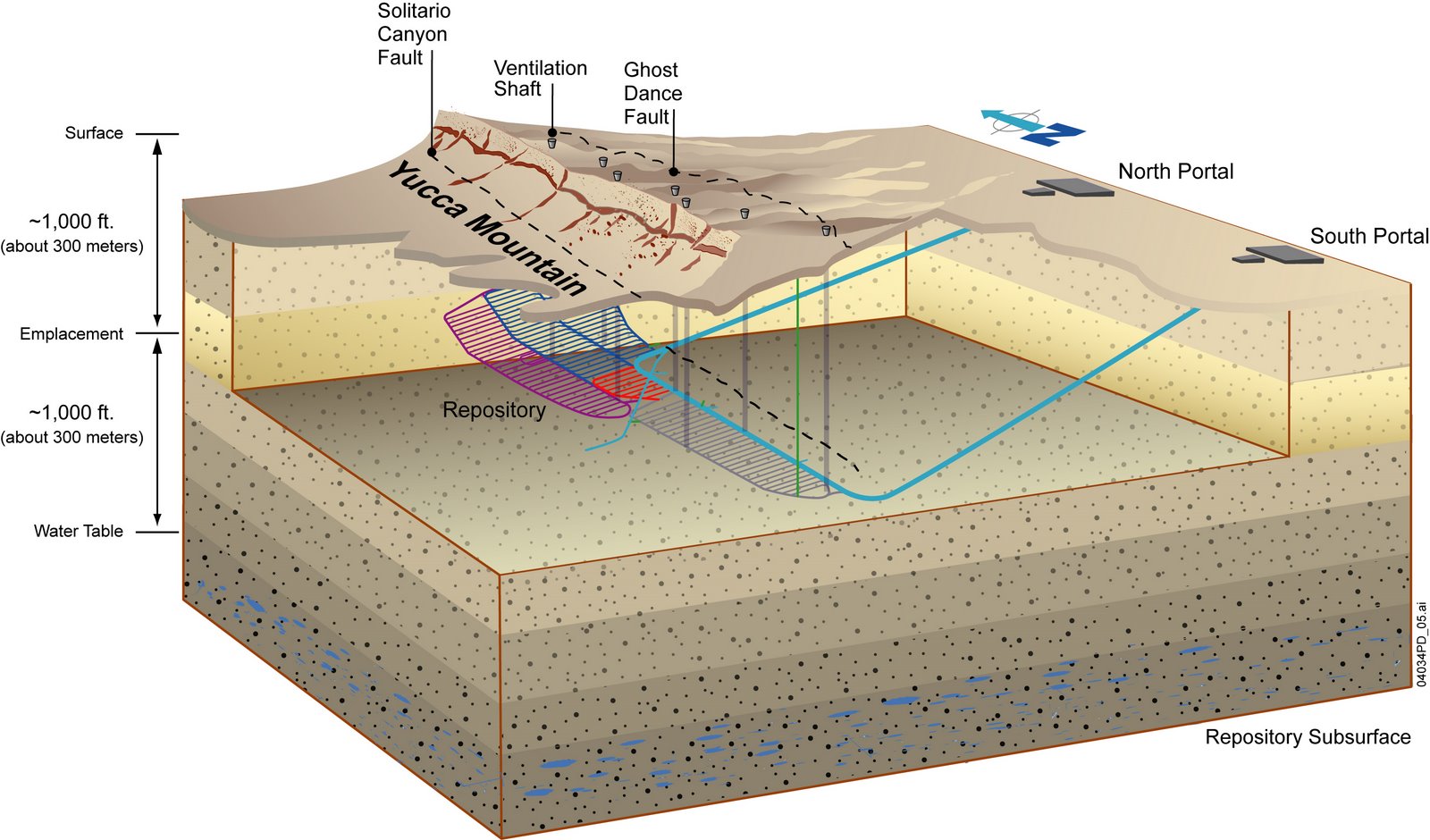Radioactive Waste 186 - Yucca Mountain Nuclear Waste Repository Revisited - Part One of Two Parts
Part One of Two Parts:
One of the biggest problems with nuclear power is what to do with all the spent nuclear fuel that has been piling up for decades. When spent fuel is removed from a reactor, it is put in the cooling pool for a few years to allow the most intense radiation to dissipate. The pools are filling up at the hundred nuclear reactors in the U.S. and, if the spent fuel cannot be removed from the pools, some reactors may have to close. There is a temporary storage system called dry cask storage in which spent fuel assemblies are placed in concrete and steel containers at the reactor site or other sites. Current dry casks are not adequate because they do not monitor the buildup of gases that might explode.
The Nuclear Waste Policy Act of 1982 (NWPA) stated that a geological repository was the best solution for disposing of spent nuclear fuel in a permanent underground geological repository where they will be no threat for thousands of years. The NWPA established guidelines for the selection of a site for a repository and procedures for licensing and construction. The Department of Energy began collecting fees from the nuclear power industry for the storage of spent nuclear fuel that was supposed to begin in 1998.
In 1987, a salt mine under Yucca Mountain in Nevada was selected as a possible site and detailed studies through the 1990s were conducted. In 2002, the DoE confirmed that Yucca Mountain was an acceptable site for a repository. Over the objections of officials and citizens of Nevada, the Bush administration moved forward with the preparation of a license application for the site with the Nuclear Regulatory Commission. After six years of dealing with many technical, regulatory and legal problems, the license application was submitted in mid 2008.
When Barack Obama was elected President in late 2008, he worked with Arizona Senator Harry Reid during 2009 to cancel the Yucca Mountain project. Part of the reason was political but part of the reason was that analyses raised the question of the possibility of ground water penetrating the repository. The project was official cancelled in 2010 and the DoE official withdrew its application from the NRC.
In August of 2013, the Federal Court of Appeals for The District of Columbia Circuit ruled that the NRC was legally bound to continue its review of the license for Yucca Mountain unless Congress intervened or allocated funds for the review ran out. Work that remained to be done included that completion of a final report on environmental and technical issues at Yucca Mountain. The last Safety Evaluation Report (SER) which was the final of five volumes of the NRC license review was completed and issued in January of 2015. The conclusion of the NRC review was that Yucca Mountain did satisfy all requirements for a geologically safe spent nuclear fuel repository. The report said that the repository should be able to safely isolate spent nuclear fuel and high-level radioactive waste for up to one million years.
In March of 2015, the NRC Chairman told the U.S. Senate that an addition three hundred and thirty million dollars would be required in order to complete the Yucca Mountain used fuel repository construction licensing process. Work that remained included settling issues of the ownership and control of land around Yucca Mountain, the water rights in the area and a required environmental impact statement. The last SER also added fourteen conditions to the construction authorization. These conditions would require alterations in the design of the repository.
Please read Part Two
Yucca Mountain cutaway diagram:
